The Japan National Tourism Organization (JNTO) has a website with indepth explanations of aspects of Japanese culture, together with some useful illustrations. Here for example is their page on Shinto Shrines, which provides names for the various items. Interesting too for what it has to say about the origins of Shinto lying in fear of destructive powers, and the origins of Kagura lying in the desire to restore the souls of the dead…
The following is (c)JTB2000: http://www.jnto.go.jp/eng/indepth/cultural/experience/d.html
***************************************************************
Shrine components
The jinja, or shrine, is where believers in Japan’s indigenous religion, Shintô, go to worship. Shintô originated in ancient peoples’ fears of demons and supernatural powers, and their worship of these. It has no written body of doctrine, but it is Japan’s main religion and is practised widely through ceremonies and festivals.
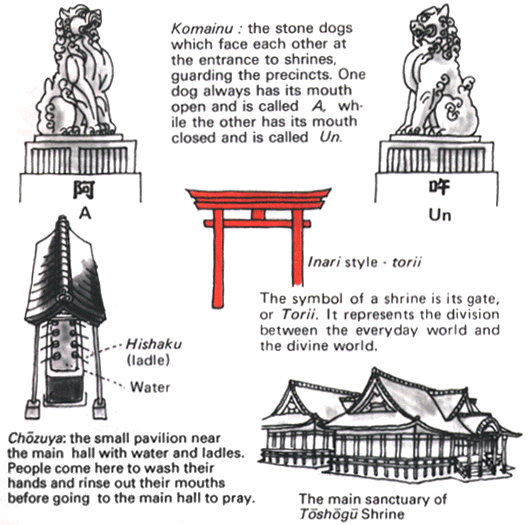
Shrine architecture
The main sanctuary of a shrine is called the Shinden or Honden. There are also ancillary buildings such as the Haiden, or outer hall, and the Hômotsuden, or treasury, but these are not arranged according to any particular specified layout.
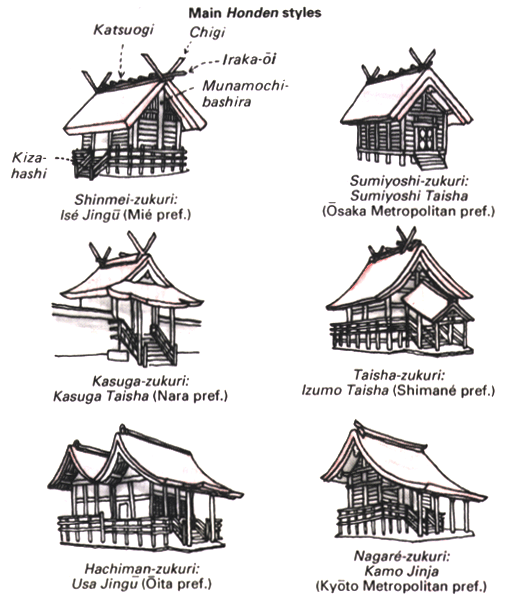
Charms and fortune slips
There are many lucky charms and other such objects to be seen at a shrine. Some are used to determine the will of the gods and some as a way of communicating with the gods and asking for their protection.
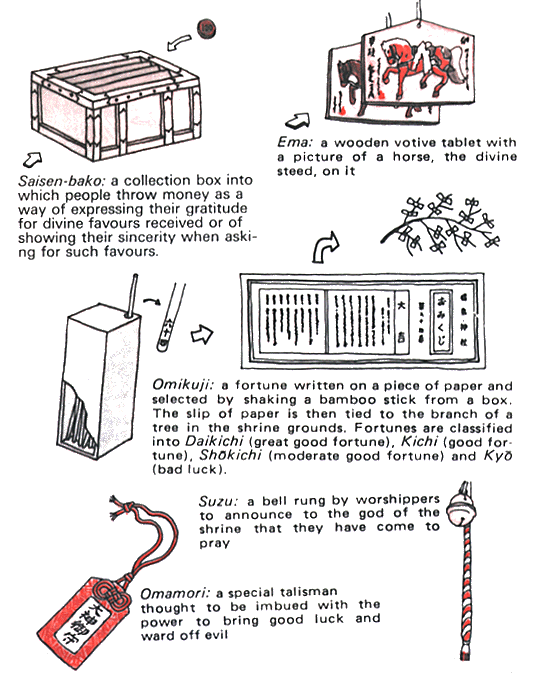
Shrine staff
The chief priest of a shrine is called the Kannushi. He is responsible for all the religious observances and the running of the shrine. The young girl assistants in a shrine are called Miko.
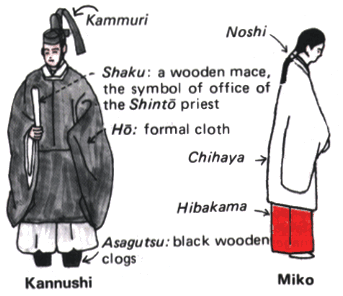
Kagura
In ancient times, it was believed that people died when the soul left the body. To try and call it back, they used a form of magic called Kagura, which involved dancing and playing flutes and drums. This became formalized and developed into Noh and Kyôgen.
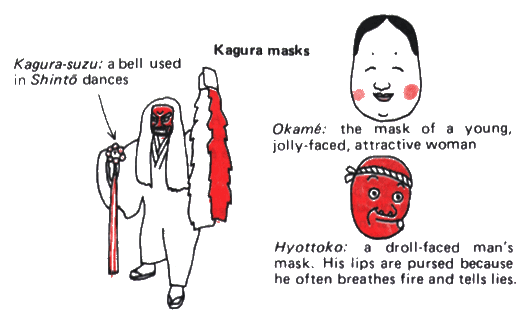

Leave a Reply